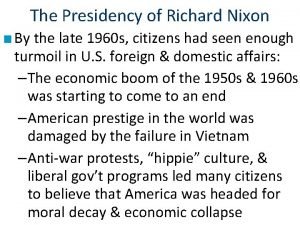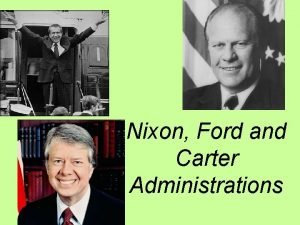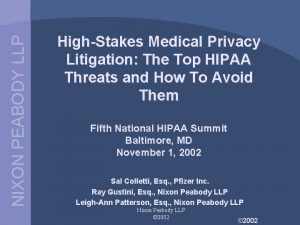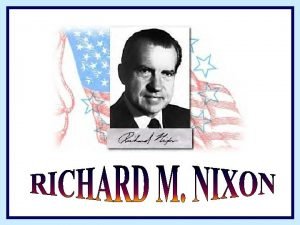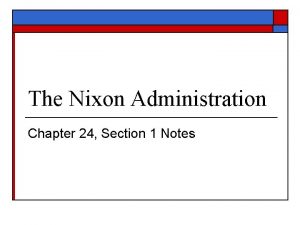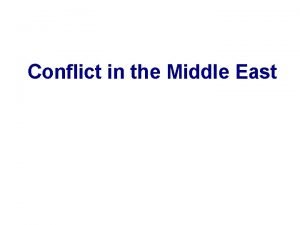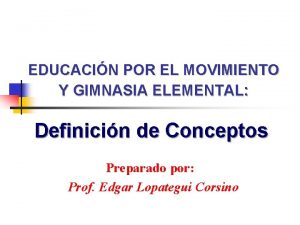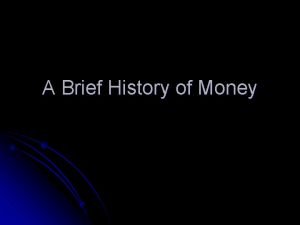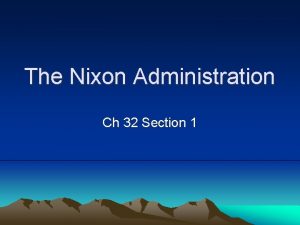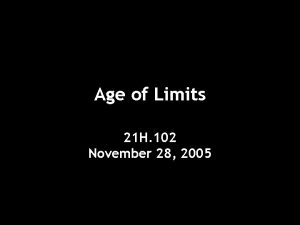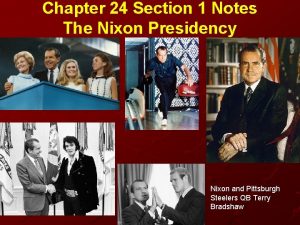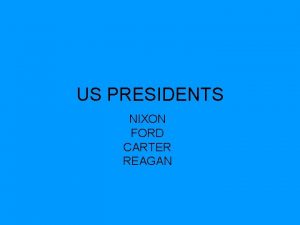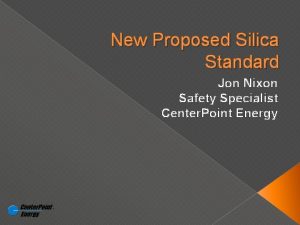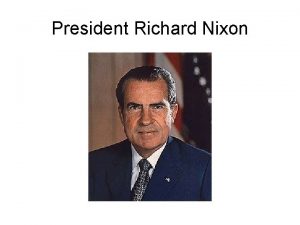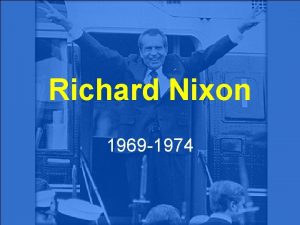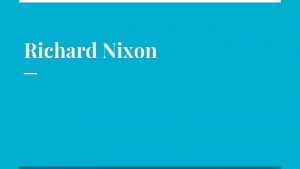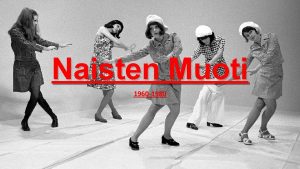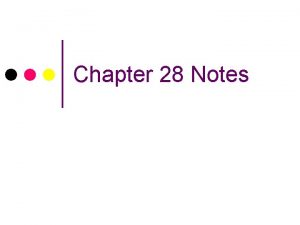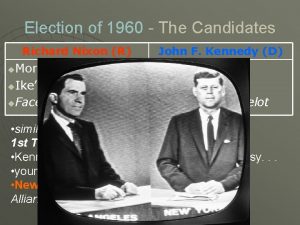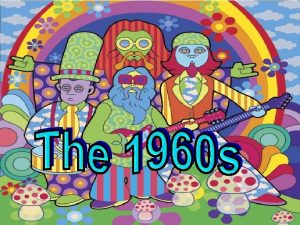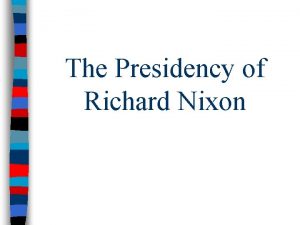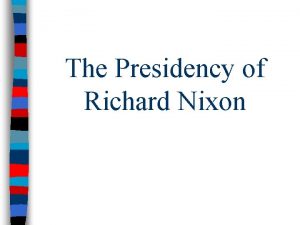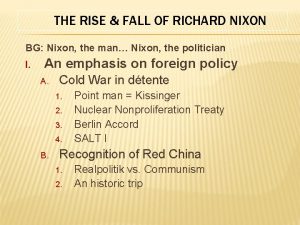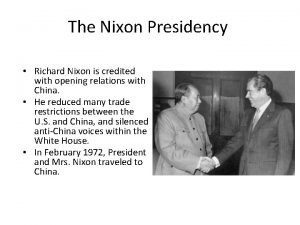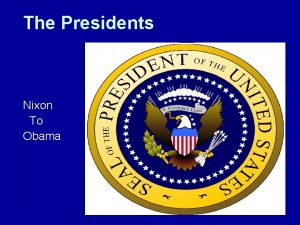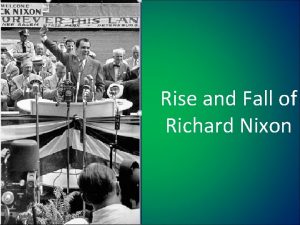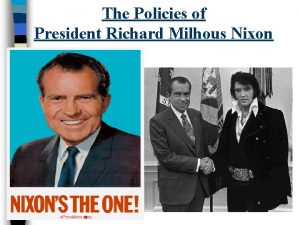Richard Nixon 1 Richard Nixon Since 1960 Nixon



















- Slides: 19

Richard Nixon 1

Richard Nixon • Since 1960, Nixon had been burning over his incompetent use of the media. But he was ready to run a strong media campaign by 1968. – His appearances were now carefully staged and scripted. – His platform slogan on Vietnam was “peace with honor. ” – Nixon exploited America’s resentment against the counterculture, portraying himself as the spokesperson for the Silent Majority. • Nixon vowed a “law and order” presidency to clean the streets of these protesters. This vow would be problematic as it later became clear that Nixon himself was a law 2

Nixon • Nixon barely won the 1968 election - by just over 500, 000 votes. • By 1968, a rising percentage of American whites asserted that blacks wanted too much too fast and that the federal government had caved in to black demands. • By 1969, student busing epitomized their fears. Here, the federal government had “intruded” into the local school districts to enforce the integration of schools. – Ironically, Nixon unexpectedly embraced affirmative action. – Nixon, the military hawk, was generally a political moderate on economic issues, and a conservative on social issues, but he could be surprising. His racial justice views were largely inconsistent. 3

Nixon’s Social Platform • Nixon exploited rising concerns about – – – Violence and crime Drug use Sexual permissiveness Racial tensions The counterculture’s rejection of authority • In order to solidify the support of what he called the Silent Majority, Nixon adopted a social conservative platform that included – – – anti-abortion pro-censorship government aid to parochial schools • This platform appealed to the following social conservative constituencies – Urban Catholic (ethnic) voters – Blue collar workers – White Southerners and some suburbanites Americans were polarized in the late 1960 s. Many were fed up with what they perceived to be the extremism of the counterculture, as well as a rise in violent crime, including urban riots. These moderates and conservatives were ready for a “law and order” platform. 4

Nixon’s domestic strategy • At home, Nixon exploited the polarized themes that differentiated liberals from conservatives and further divided the nation. • Nixon, the “law and order” President, came down hard on the counterculture. • Nixon began a war on drugs that continues to this day. 5

Nixon • While he was generally a social conservative, Nixon did endorse the Philadelphia Plan (1969), the first major Affirmative Action program. This plan required Philadelphia contractors to hire at least some African American workers. By 1970, affirmative action plans began to disturb white male workers, and by the mid-70 s affirmative action was the most polarizing racial issue in America. • However, race was not Nixon’s main focus in 1968. It was the Vietnam War, and this would be the central issue for Nixon from 1968 through 1971. The war was tearing Americans apart. • Nixon called his war plan “peace with honor” suggesting a plan to bring the war to an end – something the majority of Americans wanted – but on terms that saved America’s face. This photo captures polarized positions on the Vietnam War. It was taken in New Zealand. The Vietnam War was a polarizing issue throughout the globe. 6

Nixon’s 1968 Vietnam Platform • By 1968, Nixon was on the campaign trail and was asserting that the goal of his administration would be to end the war and win the peace in Vietnam under the slogan “peace with honor. ” • While Nixon never directly claimed to have a secret plan to end the war, he did allow the rumor mill to spin this message of hope to benefit his campaign. • In fact, President-elect Nixon did not have any secret plans to end the war, but he privately believed he could pound the North Vietnamese to the bargaining table with heavy use of airpower. Nixon is seen here accepting the Republican nomination from House Representative Gerald Ford. When Vice President Agnew was forced from office for corruption, Ford was appointed Vice President, and when Nixon was forced from office in 1974, Ford became the first President who was never elected to the Presidency or the Vice Presidency. 7

1968 Election Results George Wallace, the Southern populist segregationist, carried most of the Deep South, while Nixon carried the West, the Rim-South, and breadbasket America. Hubert Humphrey carried the North, particularly the New England states. 8

The Nixon Doctrine • By the summer of 1969, he outlined the foreign policy known as the Nixon Doctrine. • The Nixon Doctrine declared that the U. S. would honor its commitment to southeast Asia by supplying arms and aid, but not troops, against direct or indirect communist aggression in the region. • Nixon’s policy of turning the war over to the South Vietnamese was called “Vietnamization. ” However, it was probably doomed from the start for reasons that were apparent as far back as the Kennedy administration. – The ARVN (South Vietnamese troops) were not the motivated army needed to fight for the sovereignty of this new nation-state the Americans were trying to create. Furthermore, most Vietnamese people were not behind the Americans in this endeavor. 9

Nixon and the Antiwar Movement • In October, 1969, the first major moratorium on Vietnam occurred – it was a national teach-in against the war involving between two and ten million Americans in public protest across the country. • This protest enraged Nixon, who vowed to ignore the peace movement and accused protesters of being traitors. • Nixon tried to scapegoat his failed Vietnam policy on these protesters, claiming the protesters kept the U. S. military from “victory. ” The Moratorium on Vietnam march involved millions of people across the country. The march in the photo above occurred in Wisconsin. President Nixon’s reaction to the march further polarized the country and set the stage for the events of Kent State the next year. 10

Events of 1971 • Feb 8, 1971. ARVN troops, with Nixon’s approval, crossed into Laos but were driven back due to poor leadership within the ARVN and other factors. This defeat revealed the failure of the Vietnamization policy. • Nixon and Henry Kissinger work on an anti-ballistic missile treaty (ABM) with the Soviet Union. The treaty would be signed in 1972. – Nixon’s détente policy was very popular around the world. The Cold War was winding down. • July 15, 1971. Nixon announced that he had been having secret negotiations with the Peoples Republic of China (Red China) and that he would be visiting China soon. 11

1972 • Nixon made his famous trip to China in February of 1972. There, he officially recognized the PRC (Peoples Republic of China). • Three months later Nixon traveled to the Soviet Union and signed the SALT I treaty. The basic principle was to maintain a equality in U. S. – Soviet arsenals. • By election day, Nixon was well situated. His ratings had improved since his trips to China and the Soviet Union, and the monthly Vietnam casualty rate had fallen to only a few dozen people. – In November, 1972 there were only about 27, 000 troops stationed in Vietnam. • Nixon authorized bombing raids on strategic targets in North Vietnam, including parts of Hanoi. Nixon visits with Premier Chou En-Lai in China, 1972. 12

The Election of 1972 • Nixon went into the election with overall approval ratings above 50% and going up. • His opponent was Senator George Mc. Govern, a liberal antiwar candidate from South Dakota who never got off on a good footing. • Nixon won 61% of the popular vote, compared to 37% for Mc. Govern. – Nixon carried all but one state (Massachusetts) in a landslide victory. George Mc. Govern 13

The End Game for Nixon • Nixon’s response to the resurgent antiwar demonstrations in 1970 was to order the CIA, the FBI and his own secret “dirty tricksters” to infiltrate and sabotage the antiwar movement. – The FBI was experienced in this illegal subterfuge because of their involvement with COINTELPRO, the illegal program used to destroy the Black Panthers. • In 1971, Nixon created the Plumbers, a secret white house operation intended to sabotage his enemies – often by illegal means. • Increasingly, Nixon felt himself under siege by the protesters, a Democratic Congress, and a increasingly hostile press • Nixon had built his career by lashing out at his enemies, and by the early 1970 s he began to cross the line between legal and illegal power. E. Howard Hunt, above, and G. Gordon Liddy (below in a recent photo), were White House burglars. Liddy, a small-time crook who saw himself as a mastermind, concocted burglary, kidnapping, firebombing, and other schemes against Nixon’s enemies. He’s now a favorite on FOX News and right wing radio. 14

The Pentagon Papers, the Plumbers, & Watergate • When the NY Times published the Pentagon Papers in 1971 exposing Presidential lies regarding Vietnam from the early period through 1967, Nixon created the Plumbers to discredit Daniel Ellsberg, the man who had provided them. • The Plumbers were charged with – Stopping government leaks, and – Discrediting Nixon’s enemies by any means necessary. They targeted Nixon’s political Daniel Ellsberg exposed the top enemies, as well as members of the secret Pentagon Papers. counterculture like Daniel Ellsberg. • In June, 1972, the Plumbers were caught breaking into and bugging the Democratic National Headquarters at its Watergate complex. • When Nixon learned of their bungled operation he immediately sought to cover it up and began to obstruct the legal investigation into the break in. • For this cover up, Nixon would be tried for impeachment and would resign in 1974 to avoid a Watergate in Washington, DC. guilty verdict. 15 • http: //www. youtube. com/watch? v=6 a. Z 8 v. Nagvks

Nixon’s Personality • Nixon had a dual personality. • On the one hand he was smart, poised, and reflective, while on the other hand he was insecure, mean-spirited and frightened. • When the first personality reigned, Nixon was at his best (ie China, triangulation and détente), but when the second personality reigned Nixon was at his paranoid worst. – Nixon was a drinker who allowed “Mr. Hyde” to come out to torment his enemies. • Tragically, it was mainly the second Nixon who controlled the White House for the five year period after 1968. Perhaps Nixon even enjoyed the politics of polarization and repression. The secret tape recordings – now publicly available seem to suggest this. President Nixon with an audio tape. The Watergate investigation exposed the existence of recorded audio conversations from the Oval Office. These tapes implicated Nixon in illegal activities – particularly obstruction of justice and helped lead to his resignation. 16

Nixon’s Personality • Nixon often privately spoke of “niggers, ” “jigs, ” and “jigaboos, ” and he constantly used 4 -letter words about his enemies. • It appears that Nixon was indeed somewhat unstable. He was prone to getting drunk, and while drunk he spoke of “nuking the commies. ” – His aides feared that he was literally becoming a “madman” so James Schlesinger, his Defense Secretary, insisted that the Pentagon contact him for approval if Nixon ever ordered nuclear weapons to be used. • Nixon came very close to subverting the democratic process. Only the persistence of two Washington Post reporters exposed the corruption of this “imperial Presidency. ” 17

Nixon’s Vietnam Controversy • While Nixon did reduce U. S. troops in Vietnam, he also escalated the war in several ways. – He escalated the air war; – He widened the war into Cambodia and Laos. • Nixon’s policies can be evaluated by their success in achieving specific goals for Vietnam policy: – Goal 1: Nation building? Nixon’s policies created the impression that South Vietnam could stand on its own under Vietnamization. This goal was not met. Vietnamization was essentially a means for Nixon to buy time while he pursued a treaty. He did not realize it would take so long to get one. – Goal 2: An honorable extraction, even if it takes longer than a simple unilateral withdrawal. “Peace with honor. ” In this photo a South Vietnamese farmer holds his dead son while asking the ARVN soldiers, “Why? ” 18

Nixon’s Exit • Ironically, Nixon contributed to the burn out that most Americans felt by 1974, when he stepped down. • This burn out ultimately helped the conservatives, because most people were just too tired to continue pushing for reforms. Nixon bids the nation farewell as he boards a Presidential helicopter after resigning from office on August 9, 1974. 19
 Richard nixon tricky dicky
Richard nixon tricky dicky Richard nixon
Richard nixon Richard iii pursuit of power
Richard iii pursuit of power Vicki nixon
Vicki nixon Contour of abdomen
Contour of abdomen Spleen auscultation
Spleen auscultation Regents of university of california v bakke
Regents of university of california v bakke Nixon peabody boston
Nixon peabody boston Nixon quaker religion
Nixon quaker religion Chapter 24 section 1: the nixon administration answers
Chapter 24 section 1: the nixon administration answers Nixon china
Nixon china Vanderbilt university isfaa
Vanderbilt university isfaa Características de educación física
Características de educación física Jerry nixon microsoft
Jerry nixon microsoft Nixon tally stick download
Nixon tally stick download Chapter 32 section 1 the nixon administration
Chapter 32 section 1 the nixon administration Nixon leaving white house
Nixon leaving white house Chapter 24 section 1 the nixon administration
Chapter 24 section 1 the nixon administration Nixon ford carter reagan
Nixon ford carter reagan Nixon safety
Nixon safety

